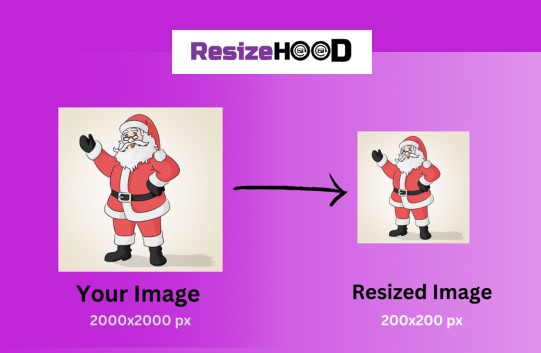Choosing the right image dimensions for every use case can feel overwhelming—but it’s one of the most important steps in creating clean, fast-loading, and professional-looking content. Whether you’re preparing images for your website, email signature, social media, or blog, knowing how to choose the right image dimensions for every use case ensures your visuals look great and perform even better.
From resizing a 300×80 pixel image jpg for a neat email footer to optimizing a 1500 x 1000 pixels in size blog header, this guide will walk you through it all. We’ll even touch on tools like photo resizer 300×80 and resizehood that make this process super easy.
Why Image Dimensions Matter More Than You Think
Choosing the right image dimensions for every use case isn’t just a design preference—it impacts your page speed, layout consistency, SEO, and how professional your content appears.
Imagine uploading a 4000px-wide image to your website header when it only needs to be 1500 x 1000 pixels in size. You’re slowing down your page and wasting storage. Now think of someone trying to shrink their company logo into a 300×80 pixel image jpg without losing quality – also not so easy unless you use the right 300×80 image jpg converter.
Email Signatures: Go Small but Sharp
For email footers, one of the most common and effective sizes is 300×80 pixels. It’s compact, lightweight, and ideal for logos and banners.
Tools to Try:
- signature resize 300×80
- signature resize 300×80 online
- signature resize 300*80
- photo resizer 300×80
- pic resize 300*80
- 300*80 pixel converter
All of these help you get that perfect-size visual without blur or awkward cropping. If you’re handling signatures, knowing how to choose the right image dimensions for every use case—especially ones like 300×80 pixel image jpg—is essential.
Website Banners and Headers: Make an Impact
Need something for a homepage hero image or blog cover? You’ll likely be working with larger formats like 1500 x 1000 pixels in size. These dimensions allow space for clear visuals and overlay text, without pixelation on larger screens.
Again, the rule stands: choosing the right image dimensions for every use case means you’re creating something visually stunning and functional.
Mobile and App UI: Pixel-Perfect Precision
When you’re designing for compact UI elements, such as icons or app banners, a common size is 256*64 pixel. You’ll want precision here – images that are too large get shrunk and blurry, and images that are too small get stretched and fuzzy.
Using a tool like resizehood can help you hit the perfect dimensions on the first try.
Best Tools to Resize Images for Any Format
Not sure where to start? Here are a few great tools to help with quick image resizes:
- 300×80 image converter – Great for email logos or signature bars
- pic resize 300*80 – Quick online fix
- photo resizer 300×80 – Ideal for both JPG and PNG formats
- 300*80 pixel converter – Handles precise input/output image size
These will help you master the art of choosing the right image dimensions for every use case, whether you’re working with banners, footers, or app thumbnails.
Choose the Right Size, Every Time
No matter your project – email, website, or app—choosing the right image dimensions for every use case makes your visuals more effective. It’s not just about looking good. It’s about loading fast, displaying cleanly across devices, and making a strong first impression.
Whether you’re working with a 300×80 pixel image jpg, resizing with resizehood, or creating a high-res blog post banner at 1500 x 1000 pixels in size, remember – choosing the right image dimensions for every use case is the key to pro-level design and performance.
If you’re looking for the best image resizer tool, it really depends on your needs—but for most everyday use cases, Resizehood stands out as a top choice. It’s easy to use, works directly in your browser, and supports precise dimensions like 300×80 pixel image jpg, 256*64 pixel, or even larger sizes like 1500 x 1000 pixels in size.
Whether you’re doing a signature resize 300×80, using a 300×80 image converter, or need a quick fix with a photo resizer 300×80, Resizehood covers it all with speed and accuracy. For anyone learning how to choose the right image dimensions for every use case, starting with Resizehood is a smart move.




